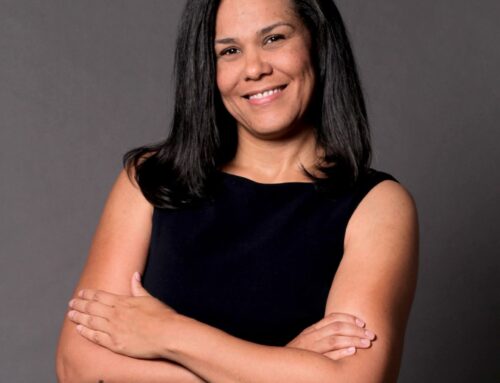Bumps in the road: South Dallas neighbors want City to speed up traffic-slowing efforts

In the Bertrand neighborhood of South Dallas, third-generation homeowner Delphine Ganious often relaxes on her porch surrounded by vibrant foliage. Sometimes, though, the sights and sounds of speeding cars put her on edge.
Ganious isn’t the only one worried about a potential vehicle collision as the result of speeding in her neighborhood. Several neighborhood associations in South Dallas, after pushing the City of Dallas for traffic safety measures, have encountered years of delays and constant runarounds with little progress — some are still waiting.
“I can’t tell you how many times I see cars zooming past here like they’re on a racetrack,” Ganious says.
She says she’s witnessed these issues since childhood and fears the speeding cars will one day result in a tragedy. As president of the Bertrand Neighborhood Association, she has spent nearly two decades advocating for speed bumps, speed limit signs and street lamps. Despite her efforts, she feels her neighborhood’s requests have been ignored.
“It’s South Dallas, the City treats it like it doesn’t deserve the same attention as other areas,” she says. “The City’s outdated rules prevent progress.”
Six months after they began requesting speed bumps, neighbors finally saw a new speed limit sign posted on Robert L. Parish Avenue, even though that’s not what they requested.
“I’m coming from work one afternoon and I see them putting up speed limit signs,” Ganious says. “I know something is better than nothing, but signs won’t physically slow down these fast drivers.”
Ganious recalls no updates or communication from the City about the speed bumps she has repeatedly requested. And she isn’t alone in seeking safety improvements for her neighborhood.
New ‘speed cushions’ in Fair Park Estates and Queen City
Homes in Fair Park Estates were built in 2011 by the SouthFair Community Development Corporation, just east of the historic South Boulevard Park Row neighborhood. Norma Baker, a resident and vice president of Fair Park Estates neighborhood association since 2012, noticed an uptick in speeding on South Boulevard in 2017.
Baker and the association turned to SouthFair for support and submitted multiple 311 requests to the City for solutions. Initially, neighbors pushed for a four-way stop sign at the intersection of South Boulevard and Jeffries Street, but the City of Dallas Department of Transportation recommended “speed cushions” instead, citing insufficient traffic.
“We had the traffic tracker out, and they told us there wasn’t enough traffic for a stop sign,” Baker says.
A traffic tracker is a tool — either a camera or radar, depending on the technology utilized by the City contractor — that gathers data on the number of vehicles passing through a neighborhood, the direction traffic is coming from, and their speed. The City didn’t share the data gathered with Baker or neighbors.

Baker says the process toward safety measures was lengthy and involved hurdles such as asking neighbors to sign petitions, filing numerous 311 reports, and dealing with City staff turnover. It took about six years for the City to install “speed cushions” on South Boulevard.
“If it weren’t for the support of Natalie Guerrero, chief of staff for [City Council] District 7, and SouthFair, we’d still be fighting for a solution,” Baker says.
In 2019, the City phased out concrete speed humps due to their high cost and the inconvenience they cause for emergency vehicles. Rubber speed cushions were introduced as a more effective solution — being both more affordable and quicker to implement in neighborhoods.
After the City installed speed cushions, Baker noticed a decline in car accidents. But she still wants a four-way stop sign.
Eva Jones, president of the Queen City Neighborhood Association, says their longtime speeding problems have worsened in the last couple of years. It wasn’t until the association escalated concerns to their District 7 councilmember, Adam Bazaldua, that they received speed cushions alongside Charles Rice Learning Center on Latimer Street two years ago.
“I’ve seen people escape having major collisions by just inches, so it’s our job as the neighborhood association to have the people in power to come to our meetings to help us speed up our requests,” Jones says.
Jones now sees a significant difference in the slow-down of vehicles on Latimer as compared to other streets without speed cushions.
“It’s such a long process, but we know that it’s something we have to do in order to protect the older adults and our children,” Jones says. “The City needs to make the process easier to navigate and reduce the amount of time it takes to get them installed.”
Steps to install speed cushions (formerly known as speed bumps or humps) on a Dallas street
- Residents must submit a request by calling 311, going through the 311 website, or using the 311 app.
- Requests are funnelled to the the City of Dallas Transportation and Public Works Department and its Neighborhood Traffic Management Program, which includes speed cushion installations.
- The requester will be sent an application to fill out. The proposed speed hump zone must cover at least one block, and applicants must obtain signatures from two-thirds of the residences and property owners within the zone.
- After the application is submitted, traffic engineers will look at the posted speed limit signs on a street and, utilizing the traffic tracker, determine how many cars are exceeding the speed limit, and the speeds at which they are traveling. The City does this to verify significant speeding, typically 10 miles over the posted speed limit, happening on a residential street. (Because Bertrand started the process of getting speed humps before the alternative of speed cushions entered the picture, they were denied based on Parish Avenue being an emergency vehicle route, but that could change moving forward.)
- If the City approves speed cushions, all costs associated with installation are covered by the City of Dallas Transportation and Public Works Department. Auro Majumdar, assistant director of the Department of Transportation and Public Works, says that the total cost of labor, materials and equipment is $1,200 per speed cushion.
Majumdar adds that the department’s goal is to complete the entire speed cushion installation process — from the initial 311 call to installation — within six months.
The department receives between 200 and 250 traffic safety study requests per month from across Dallas, Majumdar says. They use speed cushions as a solution on residential streets that experience low-volume traffic at lower speeds (the City’s standard residential speed limit is 30 miles per hour), so that the rubber speed cushions don’t wear out quickly, as they would in high-traffic, high-speed areas.
Share This Story, Choose Your Platform!
Brenda Hernandez-Rodriguez is Dallas Free Press’ 2024-25 Report for America corps member. A bilingual journalist who is passionate about the field, Hernandez says, “I know it has the power to change lives, even sometimes to save lives. Brenda graduated from St. Edward’s University with five internship experiences that prepared her to be a reporter who makes a difference.
When Hernandez is not writing, she enjoys spending time with her dogs, whether watching movies together or walking. Hernandez also proudly calls herself an adventurous foodie and has become a go-to source of advice about where to eat next in her hometown of Austin, Texas.
Areas of Expertise:
Community journalism
Civic reporting
Location Expertise:
Dallas, TX
Official Title:
Report for America Corps Member
Phone Number:
+1 (512) 739-8153
Email Address:
brenda@dallasfreepress.com







